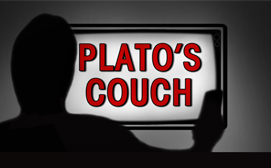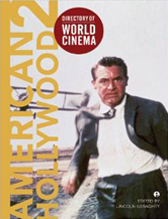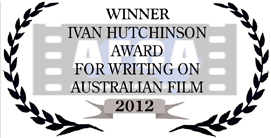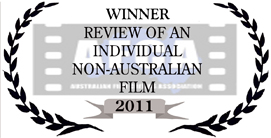
REVIEW: Zodiac
Since his major directorial debut in 1992, David Fincher has carved out a reputation as a filmmaker of nightmarishly dark, claustrophobic, and unrelenting narratives pervaded by the kind of brute nihilism that hovers at the edges of the Hollywood mainstream. In many ways, Fincher is to the post-MTV generation, what Scorsese was to the American New Wave Cinema of the 1970s and early 80s; a filmmaker who, for more than a decade, has been able to reconcile the commercial imperatives of the studio system with his own distinctly personal cinematic visions.
For me, one of David Fincher’s key ‘auteurist’ traits has been his obsessive depiction of territorial conflict filtered through a lens of gender politics (Alien3, Panic Room), class and consumer anxiety (The Game), or both (Se7en, Fight Club). Fincher’s films are also marked by an overwhelming sense of social decay, a theme that is played out through dark chiaroscuro lighting and a hyperkinetic visual style. That is to say, up until now.
 In what may prove to an important turning point in his career, Zodiac is decidedly un-‘Fincher-esque’ in comparison to his earlier films. Set around the San Francisco Bay area and based upon actual events from the late 1960s and 1970s, Zodiac begins with the shooting attack on a young couple inside their car. Moments later the killer’s heavy breathing voice echoes over the imagery through a 911 call in which he confesses to the apparent double homicide. As a police officer arrives on the scene, and the camera pans back over the bloody victims, Zodiac seems poised to follow a traditional ‘serial killer’ narrative. However, as events unfold, this violent introduction seems more like a carefully orchestrated ruse on behalf of the director.
In what may prove to an important turning point in his career, Zodiac is decidedly un-‘Fincher-esque’ in comparison to his earlier films. Set around the San Francisco Bay area and based upon actual events from the late 1960s and 1970s, Zodiac begins with the shooting attack on a young couple inside their car. Moments later the killer’s heavy breathing voice echoes over the imagery through a 911 call in which he confesses to the apparent double homicide. As a police officer arrives on the scene, and the camera pans back over the bloody victims, Zodiac seems poised to follow a traditional ‘serial killer’ narrative. However, as events unfold, this violent introduction seems more like a carefully orchestrated ruse on behalf of the director.
A subsequent murder scene, while brutal is in its finale, is underscored by a peculiar sense of detachment. Standing inarticulately before his victims in a hooded mask, the killer’s second attack seems awkward and curiously delayed. Unlike Se7en’s John Doe, the self-proclaimed ‘Zodiac’ killer’s murders have no obvious ‘grand moral plan’, their motivations concealed and elusive. The dispersion of logic that underlines the killer’s modus operandi is indicative of Zodiac’s generic subversions. When offered the project, Fincher was initially apprehensive, recalling that after Se7en he ‘had no interest in making another serial killer’ film. Instead, he “wanted to make the last serial killer film”.
 It is after the third attack that Fincher’s intentions gradually become clear. Switching the tempo of the film, and relocating the action to the offices of the ‘San Francisco Chronicle’, Zodiac becomes less interested in the killer’s violence than about the lives of the men attempting to uncover his identity; crime journalist Paul Avery (Robert Downey Jr.), Inspector David Toschi (Mark Ruffalo) and his partner (Anthony Edwards), and the cartoonist (Jake Gyllenhaal) who helps decrypt the coded-confessions Zodiac sends to the newspaper.
It is after the third attack that Fincher’s intentions gradually become clear. Switching the tempo of the film, and relocating the action to the offices of the ‘San Francisco Chronicle’, Zodiac becomes less interested in the killer’s violence than about the lives of the men attempting to uncover his identity; crime journalist Paul Avery (Robert Downey Jr.), Inspector David Toschi (Mark Ruffalo) and his partner (Anthony Edwards), and the cartoonist (Jake Gyllenhaal) who helps decrypt the coded-confessions Zodiac sends to the newspaper.
If Fincher’s earlier films played out conflicts over space, then here he is far more concerned with time, or rather, the duration of obsession. Punctuating the plot with increasing leaps forward in time from the 1960s through the 80s, Zodiac bleeds out into an endless present as the burden of the unsolved case is passed between each of the men. Even as the eras change, the style of the film (right down to the sets and costumes) remains relatively static, manifesting visually the compulsive search for ‘truth’ that has the investigators caught in an unfinished past. It’s an engaging manipulation of narrative that bears the mark of a director maturing in his craft.
While Zodiac is unlikely to end Hollywood’s fascination with serial killer narratives, it’s fair to suggest that on the basis of Fincher’s new direction, I doubt we’ve seen the last of him either.





RSS feed for comments on this post. TrackBack URI